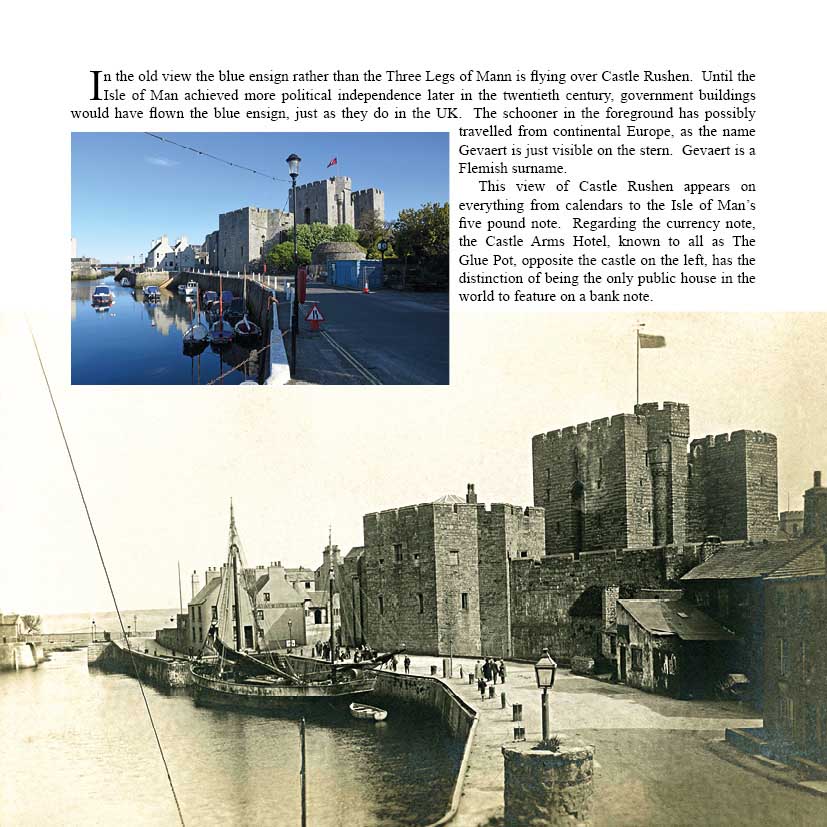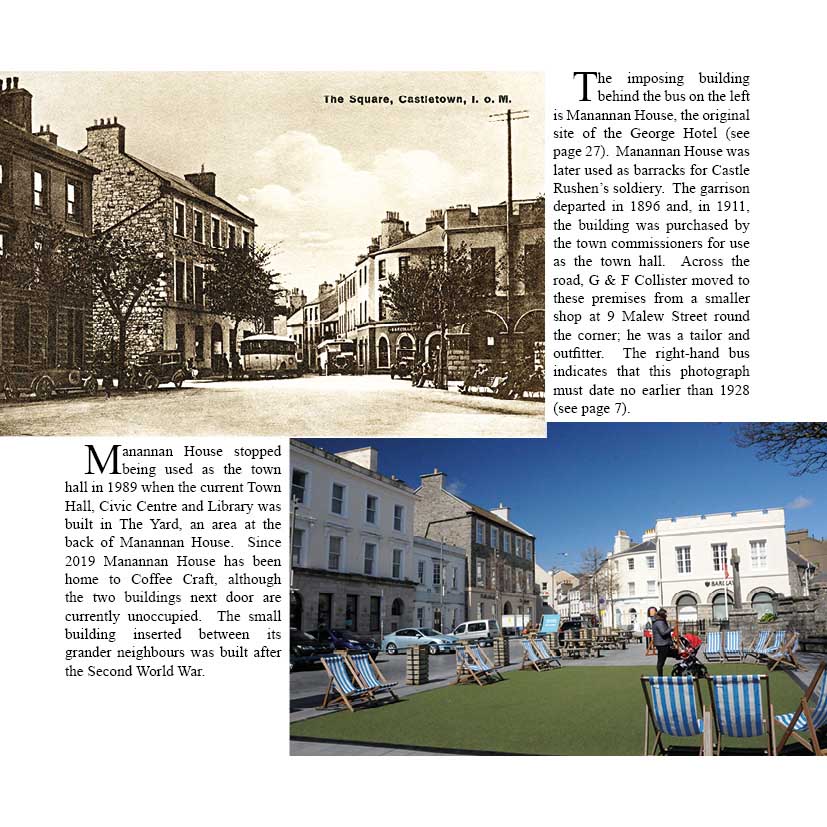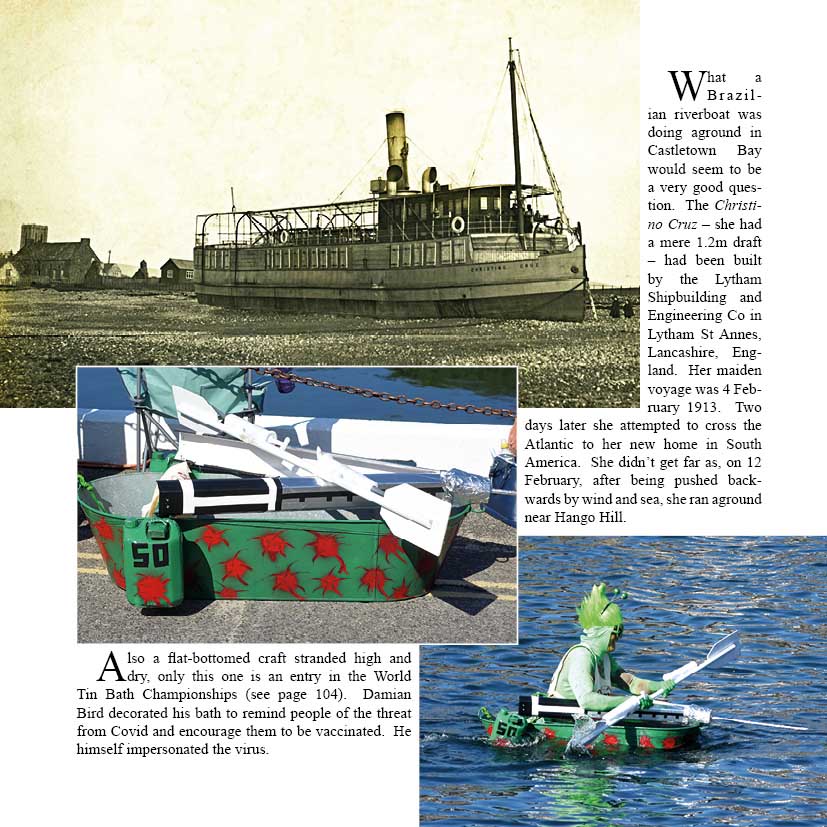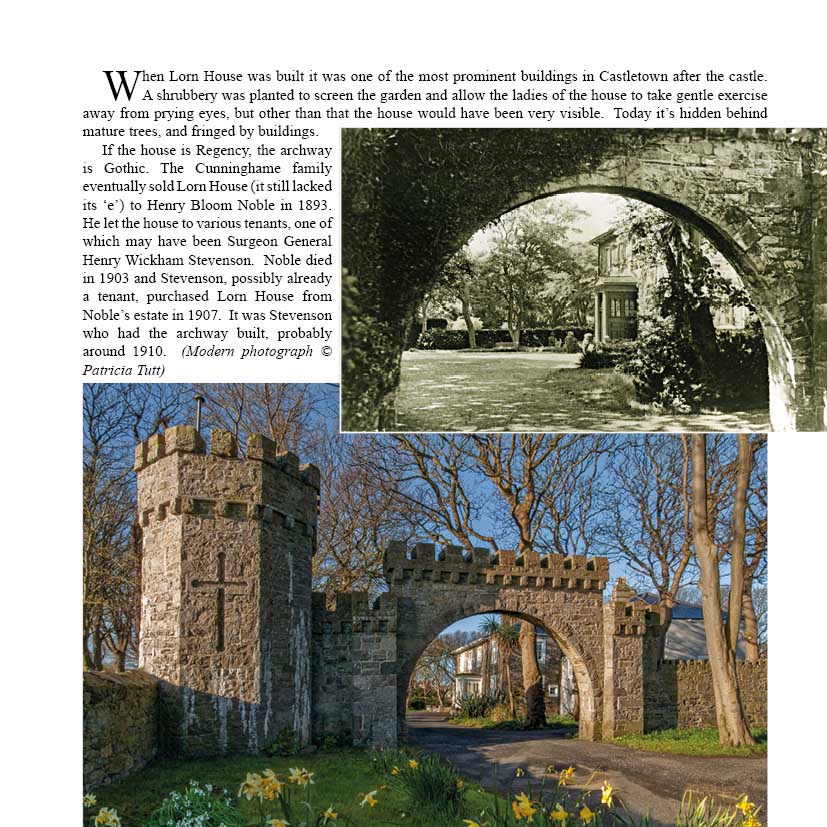Castletown: past & present
£13.95
By Ray Stanfield, George Hobbs and Sara Goodwins
Old photographs supplied by Ray Stanfield with matching modern photographs by George Hobbs. Captions by Sara Goodwins.
“This may look like a footbridge – and indeed it is – but it was built in 1913 to disguise a sewer. Originally it was supported on twelve pillars which caused local doctor Rowland Jones to Christen it ‘Apostles Bridge’… The name is particularly appropriate as Apostles Bridge gives access to Paradise, the area before Malew Street and Mill Street.”
Castletown: past & present, page 69
Home to probably the most complete mediaeval castle in Europe, Castletown has not always had an easy relationship with the ancient stronghold in the town's centre. The castle has been used as royal residence, courtroom, museum and gaol, and is still one of the largest buildings on the Isle of Man.
Castletown grew up around it, to service the garrison's needs, but maintained a civic pride of its own. Its slightly sleepy aura today belies its history as stronghold, former island capital and bustling port. Books offering a peek into what a place looked like a century ago are always fascinating, and Castletown offers more contrasts than most.
There are surprises too. Castletown was once home to a world-famous museum of magic and witchcraft. A local school is renowned for annually setting the world's most difficult quiz. And, each year, the quiet town hosts the World Tin Bath Championship. The old photographs show as many social differences as architectural ones. Much has changed, of course, but it's often surprising just how much has remained the same.
Castletown: past & present joins its sister publications Ramsey: past & present, Peel: past & present and Port Erin: past & present in offering a fascinating glimpse into the Isle of Man’s past.
From the Publisher
Most of the old photographs and images used in this book are drawn from Ray Stanfield's extensive collection of postcards. The first picture postcards were published in Britain in 1894 and millions were sent over the next twenty years. Local photographers would often produce them in quite short runs to tempt customers to send or collect them as holiday souvenirs.
But postcards were also the text messages of their day. Before everyone had a phone, the only way to contact friends and relatives was to write to them. Post was delivered several times a day, so it was perfectly possible for a postcard to arrive the same day it was sent - within the island at least. Post your card early enough and you could even get a reply the same day as deliveries went on into the evening. And postcards were cheaper to send than letters.
People therefore sent postcards for all sorts of reasons. Their main importance in this book are the images on the front, of course. Even so, as with its sister volumes about Ramsey, Peel and Port Erin, when we were putting the book together we were often fascinated by the glimpses the messages gave us of the lives of those who had written them so long ago.
Copyright 2021 Loaghtan Books. All rights reserved.











